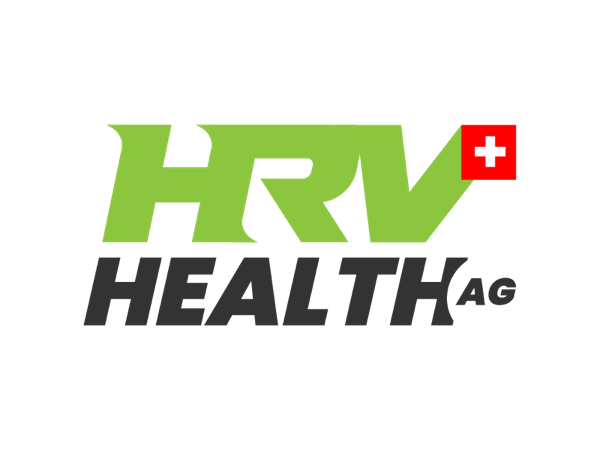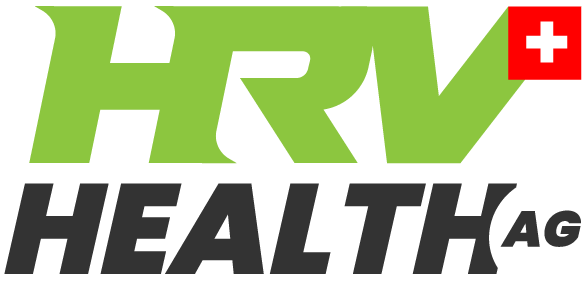
If you want to get the most out of the HRV Health Platform, you need to understand what the numbers are telling you, in the context of why you are measuring HRV. Some people use heart rate variability to improve sports performance, some use it to measure health, and some use it for both.
HRV is the measure of the variation in the gap between consecutive heart beats. Most users understand this part of the technology. It’s measured in milliseconds, again something most users know.
There are a couple of metrics given as the measure of HRV: RMSSD and SDNN. Both figures are appropriate according to the length of the reading interval – and that is why we use RMSSD – our readings last for 120 heart beats, which is a short reading.
Taking a good reading
A reliable reading must be comparable with both past and future readings.
Good readings require consistency in the way that the reading is taken. Ensure that you are completely ralaxed and comfortable.
Your pulse rate should be as close as possible to your resting heart rate before starting the reading. The HRV Heath app is designed to accommodate this requirement. In the HRV Reading screen, the top button allows you to switch on the pulse rate reading, and watch as pulse rate drops.
Once your pulse rate is close to your resting heart rate, start the HRV reading. Stay as still and relaxed as possible. Avoid other activities that may have an impact on your state of mind: watching the news, reading emails, or having a conversation.
Consistency within readings and between readings will produced the best results. Breathing at a controlled pace will help to maintain this consistency.
RMSSD
RMSSD can vary from 5 on the low end, all the way up into the hundreds. What many people do not understand is that RMSSD is measured on a geometric scale. An RMSSD of 105 is not twice as good as one of 52. For this reason, we convert the RMSSD to an arithmetic figure – the Score, and on this scale an RMSSD of 105 Is 80.9 and an RMSSD of 52 is 68.5. The drop is 15%, not 50%.
What do these numbers actually mean?
There is a great deal of discussion on the Internet that the figures are personal, and they should be viewed relative to your own results. This is only partially true.
We have the statistics for the expected RMSSD for the population of the United States, and we provide a comparison of your results to this population based on age and gender. This figure appears as the Percentile on the HRV & BP result tab. If your figure is 75.3 – your RMSSD is better than 75.3% of people in your age and gender category.
But, while a high HRV figure is usually a sign of good health, in the case of people with a heart condition, or indications of the onset of increased cardiac risk – the HRV can be very high, into the hundreds. So, how do you tell the difference? And that is exactly what the Overall health metric provides.
Overall health
The overall health figure is an underrated metric, because most people are familiar with RMSSD. Overall health is a combination of the HRV score and the HRV ratio (see below). With the health figure, you are looking for a number above 40. If you have a High RMSSD figure, and a low health number, it’s a signal that your ratio is low, and that your heart is at risk.
Here it’s interesting to see the influence of exercise types on the health figure. Strength exercises, pilates, yoga, jogging, spinning and walking all display excellent health numbers, into the 80s. More intense forms of exercise, like cycling, while having good health numbers, often do not have the same degree of success.
The Poincaré plot
The Poincaré plot provides a visual representation of the HRV figures and is a very powerful tool once you’re familiar with what it’s telling you. The Poincaré plot is good when it’s cigar shaped from bottom left to top right. When the plot looks like a tight little ball, that’s time to visit a doctor.
A widely dispersed Poincaré plot is possible indication of a heart condition, especially in the context of a very high RMSSD.
The ratio
The proportion of the length to the breadth of the Poincaré plot is the Ratio. Here, a figure below 2 is bad. A number above 4 is good. If your figure is below two, it’s not immediate cause for concern. Look at the Poincaré plot – if there are a few outliers, but the general shape is cigar shaped, don’t worry. If the data points are highly packed, keep an eye out – it’s a signal of a chronic condition that requires medical intervention.
The ECG reading
When you have signals in the ratio of a potential cardiac risk, it’s time to take an ECG reading. A good ECG reading has the regular QRS pattern we are all familiar with.
It’s important to understand the intense exercise can have an impact on the ECG reading. If you’re completely relaxed, and have not exercised in the past four hours or so, and you have an irregular ECG reading, in combination with very high HRV numbers, it’s time to visit a cardiologist.
It’s important to be aware that wild fluctuations in your RMSSD from one day to the next, from below 20 on one day, to into the hundreds the next, is also a signal of potential heart problems. Again, time to take an ECG reading.
The stress scores
We have two stress metrics, the classic Baevsky stress index and the stress score (simply termed stress on the Platform). The stress index was introduced for the Russian space program in the 1960s and the stress score is a more recent metric.
For the index, a figure above 150 is cause for concern, and for the score, anything above 10 is a sign to take remedial steps. If you have observed a deterioration in your RMSSD (or overall health) figure, that’s not explained by an obvious illness or intense exercise – then look at the stress figure – your explanation is probably there.
There are a number of factors that affect stress. It is not only the factors that we normally associate with stress – like conflict. Poor sleep can cause elevated stress, and poor sleep can be caused by elevated stress, creating a vicious cycle.
The starting point is identifying the stress – which is what the HRV reading will do for you, and then taking remedial action.
If there is a long term problem underlying the stress – marriage problems, a bad job, financial problems, or poor health, these problems will need to be addressed. Taking a holiday will not fix them. Nor will breathing techniques – unless the stress itself is the cause of your health, job, or marital problems.
Sometimes breathing techniques, exercise, meditation, and good sleep practice is all that are required, but each situation is personal, and you need to look at the solution in your personal context – but you need to fix it, because if your numbers are high, the stress is killing you.
Resting heart rate (RHR)
Resting heart rate is a powerful metric in its own right. It is a measure of both fitness and health.
An elevated RHR is a sign of poor health, and except for bradycardia, lower RHR is a sign of good health and fitness.
It is important that the HRV is taken as close as possible to RHR – which is the reason that we recommend taking the HRV reading first thing in the morning.
Sudden variations in RHR can be a signal of illness, or in the event of an athlete, an elevated RHR is an indicator that more recovery is required. Extended periods of elevated RHR are symptomatic of overtraining.
An elevated RHR in the context of a decline in the health figure is a signal of the onset of illness. If the decline in the health figure corresponds with a decline in HRV but the ratio remains usual or high, then the condition is probably acute. If the elevated RHR is extended, and is in the context of a decline in the ratio below two, and a lower health figure, then the condition could be chronic. Time for a medical check-up.
Using HRV for training
People who exercise regularly love using HRV. It provides them with positive feedback on the benefit of exercising using a metric that confirms their health, most of the the time. Regular intense exercise puts the heart under intense stress, and while people who exercise to this level will often have high RMSSD figures, they will often have a ratio that reveals the stress that they are putting on their hearts. If you are an athlete, keep an eye on the ratio figure.
Athletes want to optimise their training, and HRV provides accurate feedback on whether you are properly recovered from your last intense workout. While the RMSSD figure provides a reasonable estimate, the Poincaré plot and particularly the SD2 figure are the metrics that are relevant. The SD2 measures the length of the Poincaré plot with the longer the better. Here you are looking to compare it with previous days and when the SD2 is below average, then it’s a recovery day. If it’s much higher than normal, you are ready for a flat out effort.
Measuring HRV with wrist worn wearables
High quality data produces high quality results.
There are two ways of measuring HRV: using PPG which uses the pulse, and ECG which uses the heart’s electro cardio signals.
HRV is measured in milliseconds. Using the pulse which is often measured at one of the body extremes – like the wrist severely compromises the quality of the data, and accordingly the accuracy of the result, sometimes significantly.
The only accurate way to measure HRV that’s not in a hospital, at present, is with a chest worn heart rate monitor. To put this in context: If you take a photo that’s out of focus, you get a general idea of the picture, but when you expand the image, all you have is a blur. That’s what happens with the data from PPG based devices.
There is one stand out leader amongst the chest worn heart rate monitors, and that is the Polar H10. The H10 comes with a strap that has superior sensors to that provided with the Polar H9, and for that reason, we discourage using the H9. We do not use any other devices, at present.
There are 8 billion people on the planet, meaning that there are 4 billion with above average intelligence. We are happy catering to that half of the population, and we are quite happy that the other half use wrist borne wearable devices to measure HRV.
